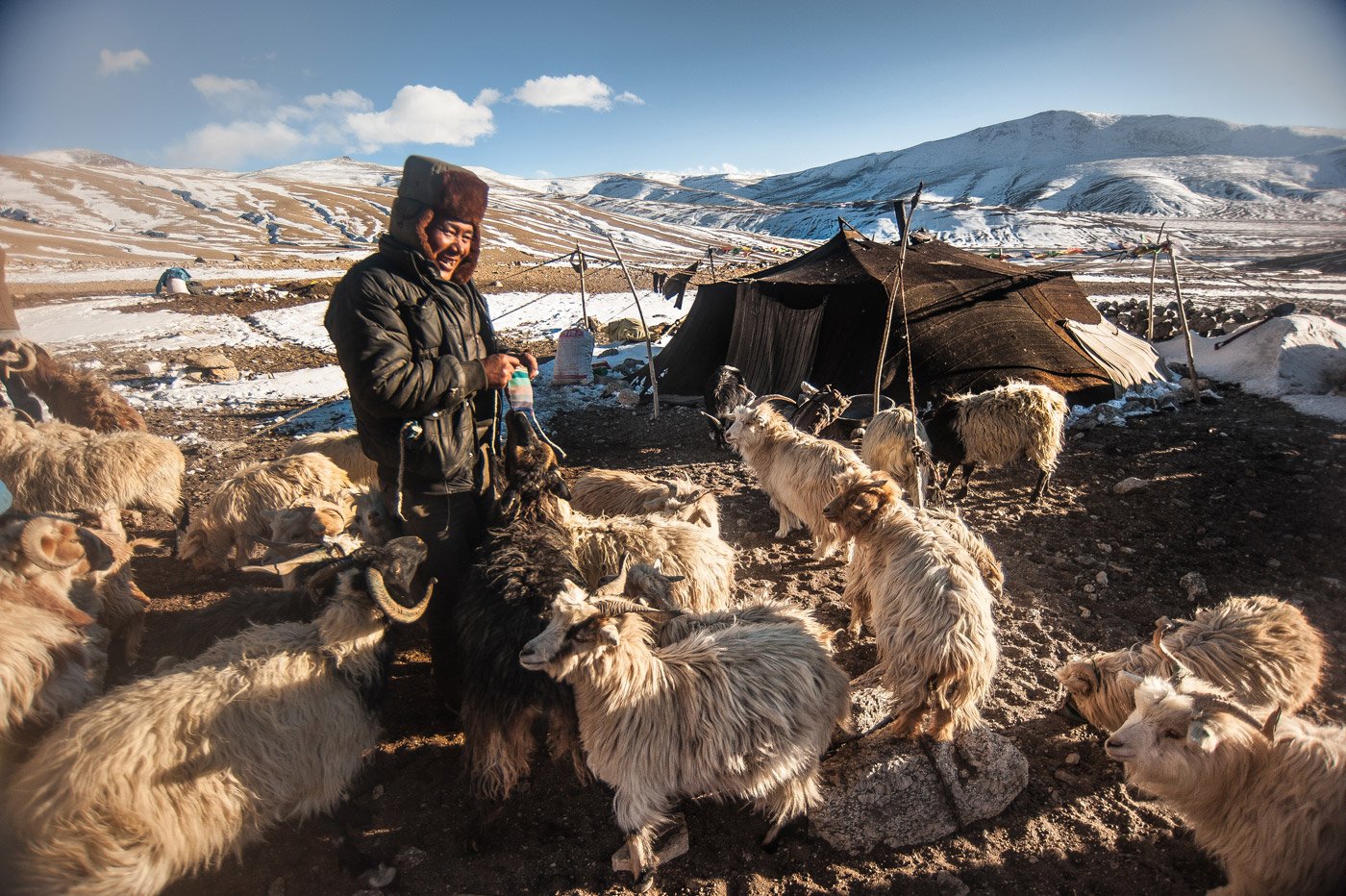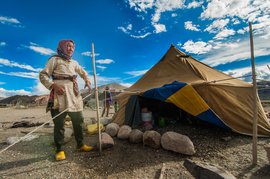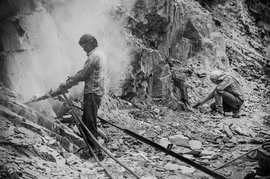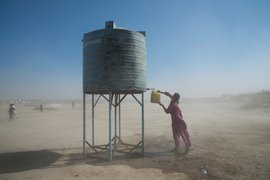En route to Tso Moriri lake in Ladakh, the pastures are dotted with tents made of wool – these are the homes of Changpas, who herd Changthangi (pashmina) goats and are among the few suppliers of authentic cashmere wool of the finest quality.
The Changpas are nomadic pastoralists. Academic accounts indicate that they migrated from Tibet in the 8th century AD and came to the Changthang region in India – a western extension of the Tibetan Plateau, across the Himalayas. This area, located near the India-China border, is closed to foreign nationals and even Indians must obtain a special permit from Leh.
This photo essay documents the Changpas of Hanle Valley in eastern Ladakh. Around 40-50 Changpa families live here, according to their own estimates.
Hanle Valley is a vast and rugged area – the winter here is very long and the summer is really short. Due to the region’s hard soil, vegetation is scarce and the nomadic Changpas move during the summers in search of green pastures across fixed pasturelands in the valley allotted to them by the heads of their communities.
I went to Hanle Valley in winter, in February 2015. After a long search, with the help of the villagers, I was introduced to Changpa Karma Rinchen. In the winter, the Changpas live a relatively sedentary life, so I went back in summer 2016. That August, after a two-day wait, Karma Rinchen finally showed up. The next day, he took me to his community’s summer grazing location, a three-hour drive from Hanle village.
Karma’s summer home was really high – at an altitude of 4,941 metres. It sometimes snows here even during the summer. I spent the next seven days with him and his family. Karma, around 50 years old, is a goba or community elder – four units of Changpa families report to him. A goba must be wise, spiritual and experienced. Karma has all of these qualities. “We love the nomadic life because it’s about freedom,” he said in a mix of Tibetan and Ladakhi.
The Changpas are Buddhists, and followers of the Dalai Lama. Besides goats, they also keep sheep and yaks, and many still follow an old barter system, with various communities along a local network exchanging some of the goods they produce.
But the times are changing. Along the way, I saw an under-construction road that will ensure smoother movement for the Indian Army and the Indo-Tibetan Border Police – the road will alter the landscape. And, Karma said, 2016 was not good at all, “…because the cooperative society from Leh has not come yet to collect the wool. Perhaps that is because inferior quality and cheap cashmere wool from China is coming into the market."
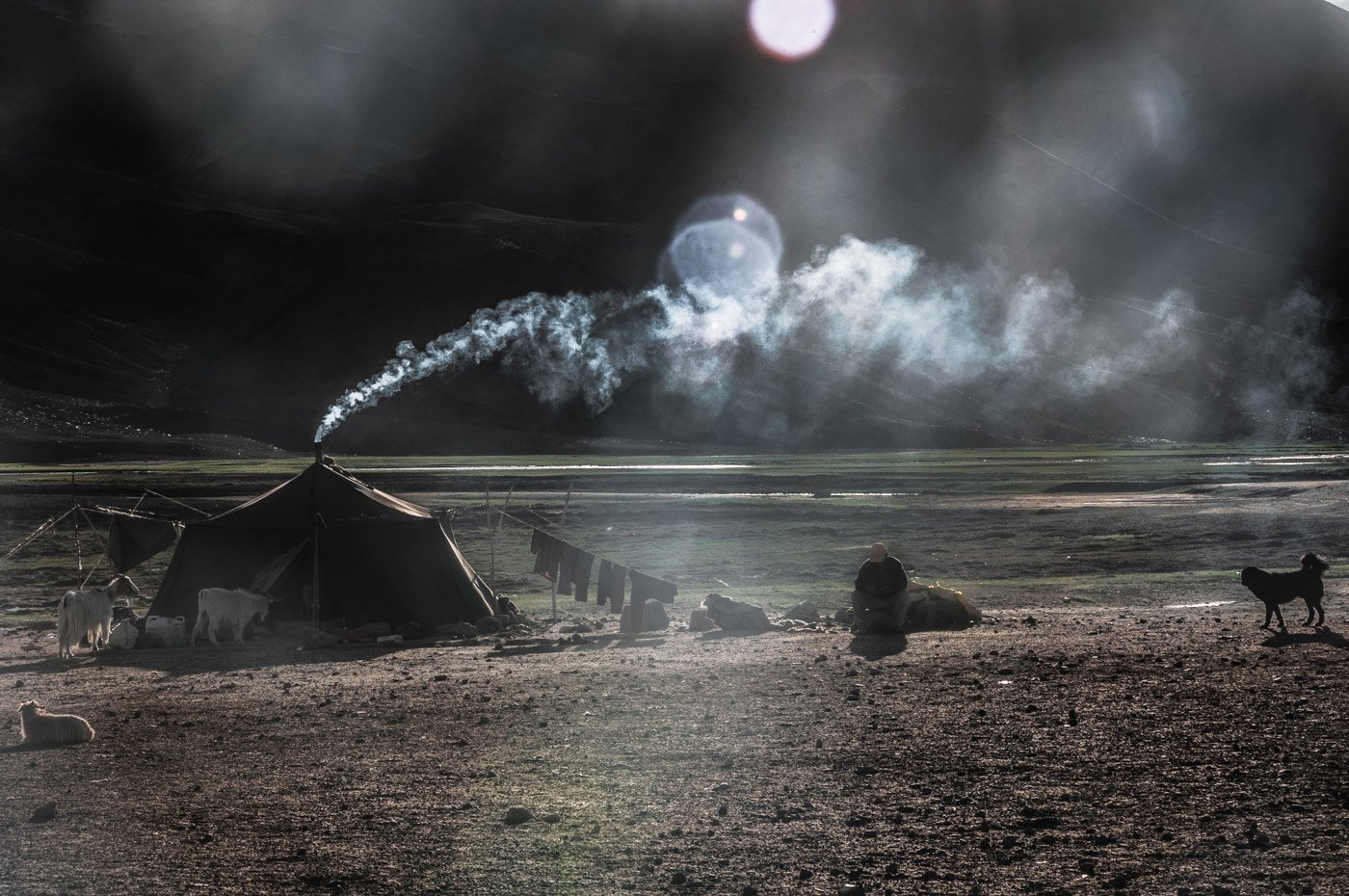
The Changpas live in tents known as rebos . To make a rebo , yak wool is spun into yarn by the families, then woven and stitched together. The material protects the nomads from the extreme cold and icy winds. The rebo is erected over a pit about two feet deep and held in place by wooden posts. A distinct family unit occupies each rebo
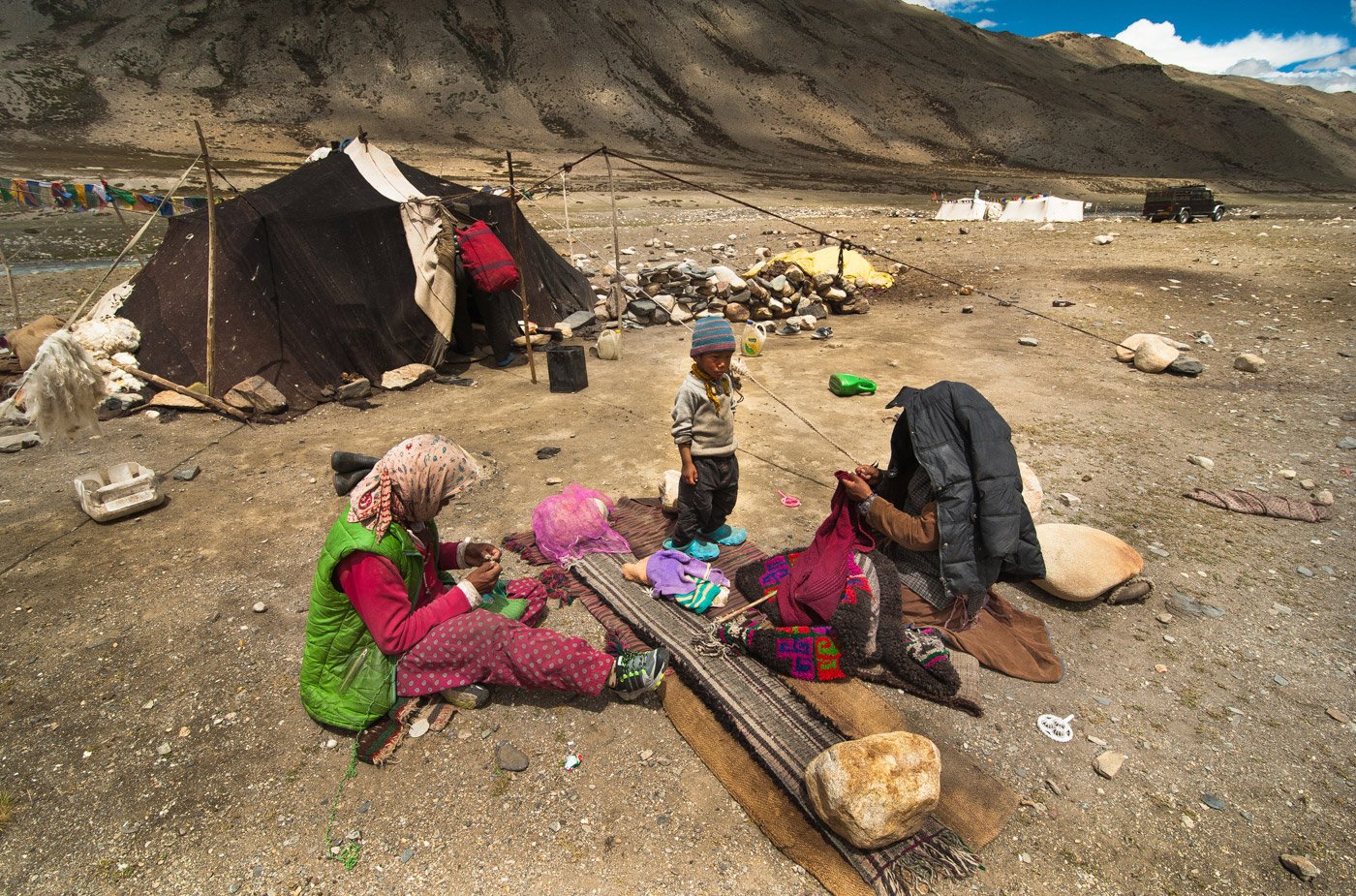
A Changpa family stitching yak wool outside their rebo on a summer’s day. Most of their time is taken up by the same cycle of daily activities: herding, milking and shearing. In the middle stands Samdup, a little Changpa boy
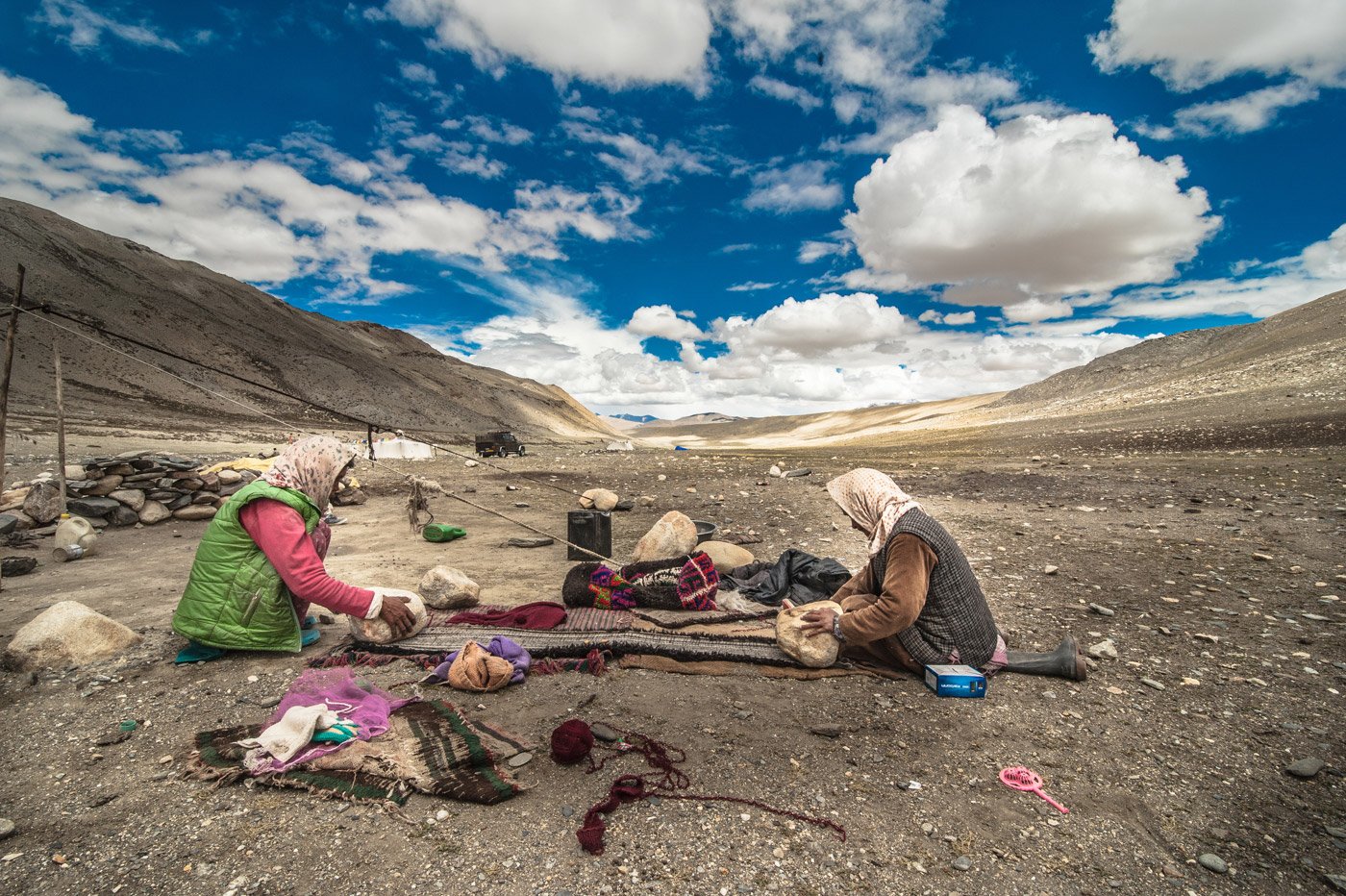
Yama and Pema busy making wool. Changpa women are experienced herders; younger women usually take the animals for grazing, while older women participate in milking and making dairy products. The men in the community also herd the animals, as well as shear them and sell the animal products.
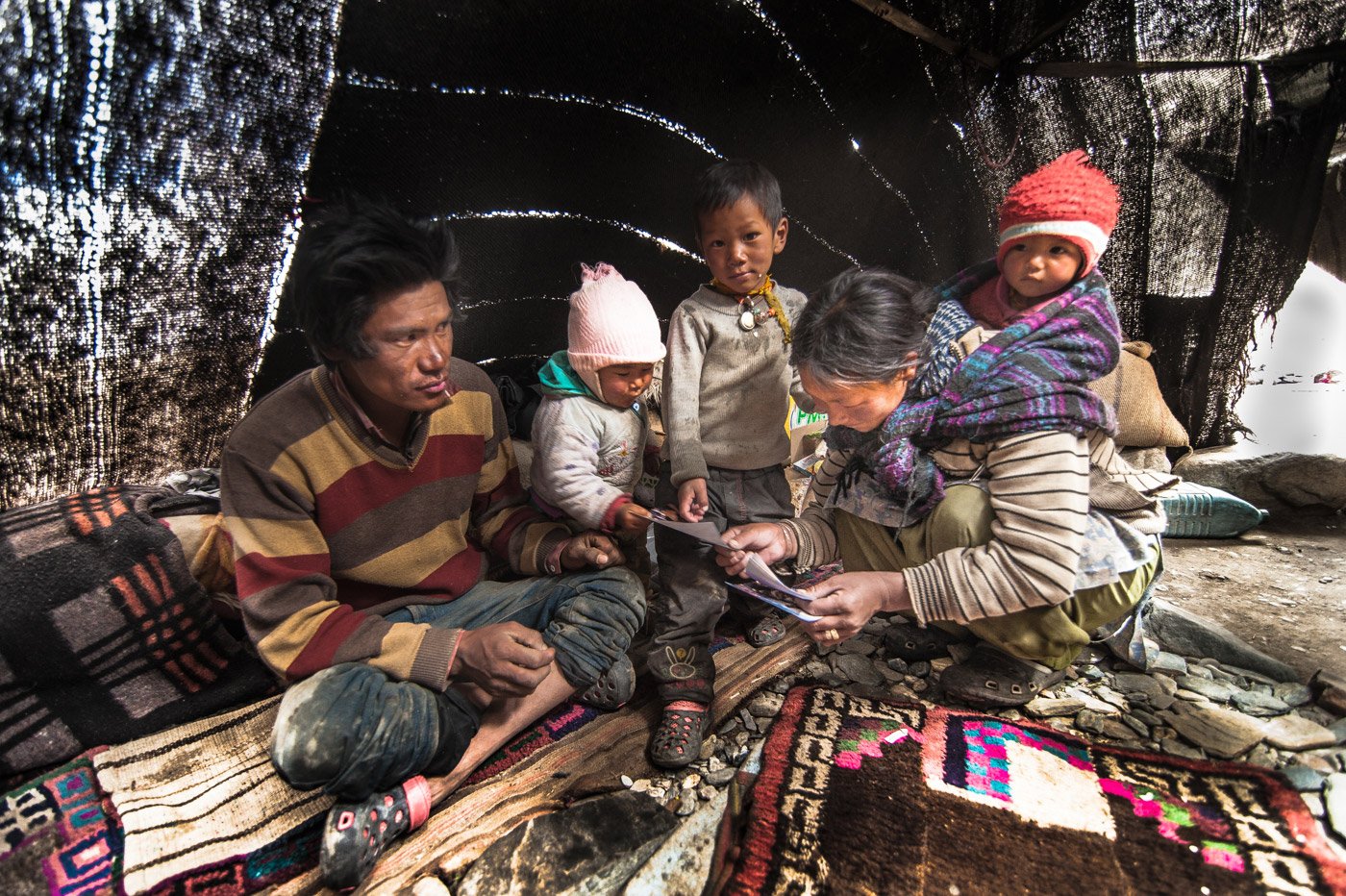
In the past, the Changpas were polyandrous – multiple brothers married the same woman. But this practice has now nearly vanished
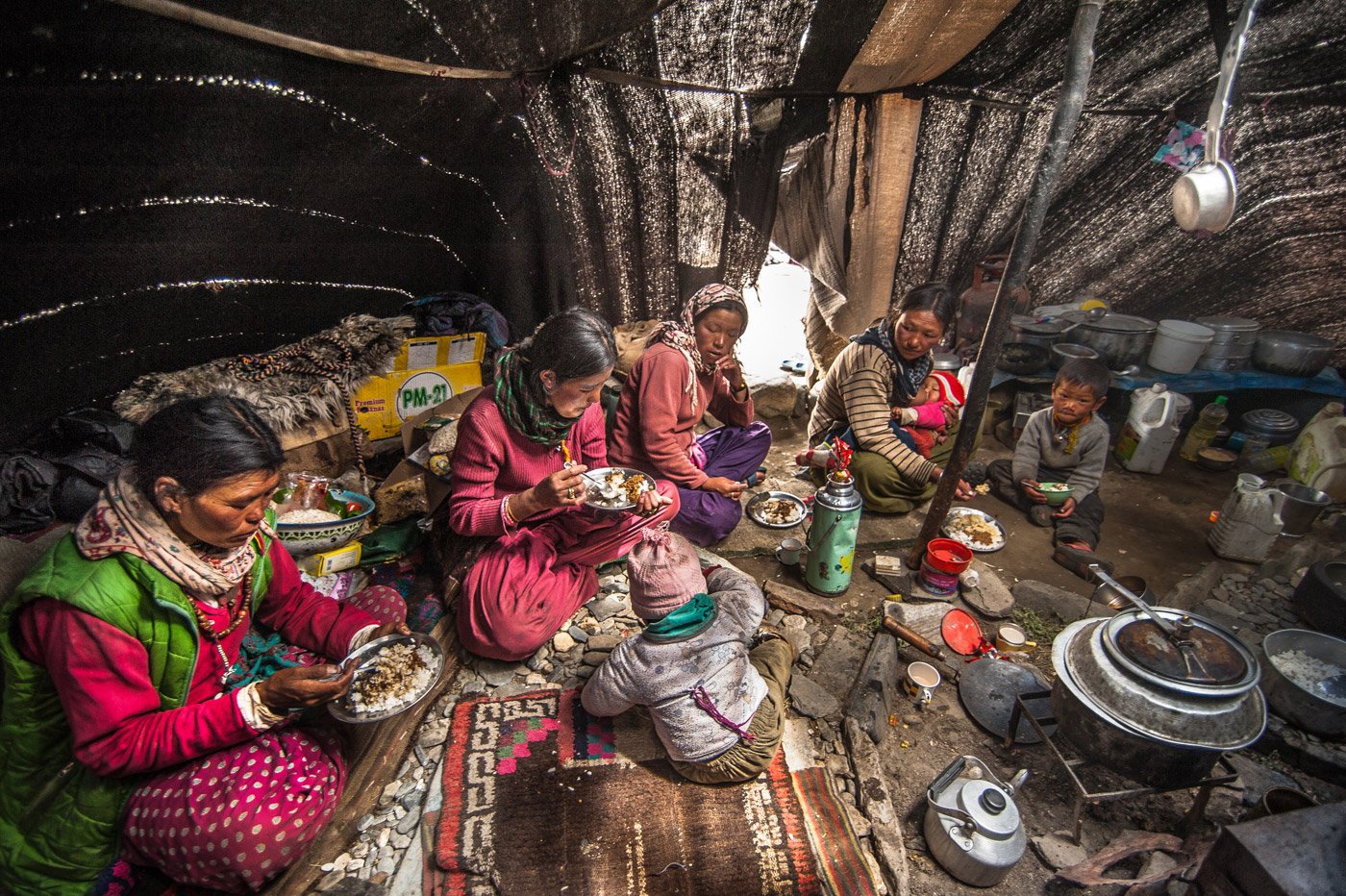
The summer days are so busy that sometimes a lunch break is a luxury – so the Changpas settle for fruit or dried yak meat and a few staples made of barley

Tenzin, a Changpa kid, collecting puffed rice from his father. In the past, little children were taught by their families to count the herds. But this way of life is rapidly changing and most of the Changpa children now go to school in eastern Ladakh
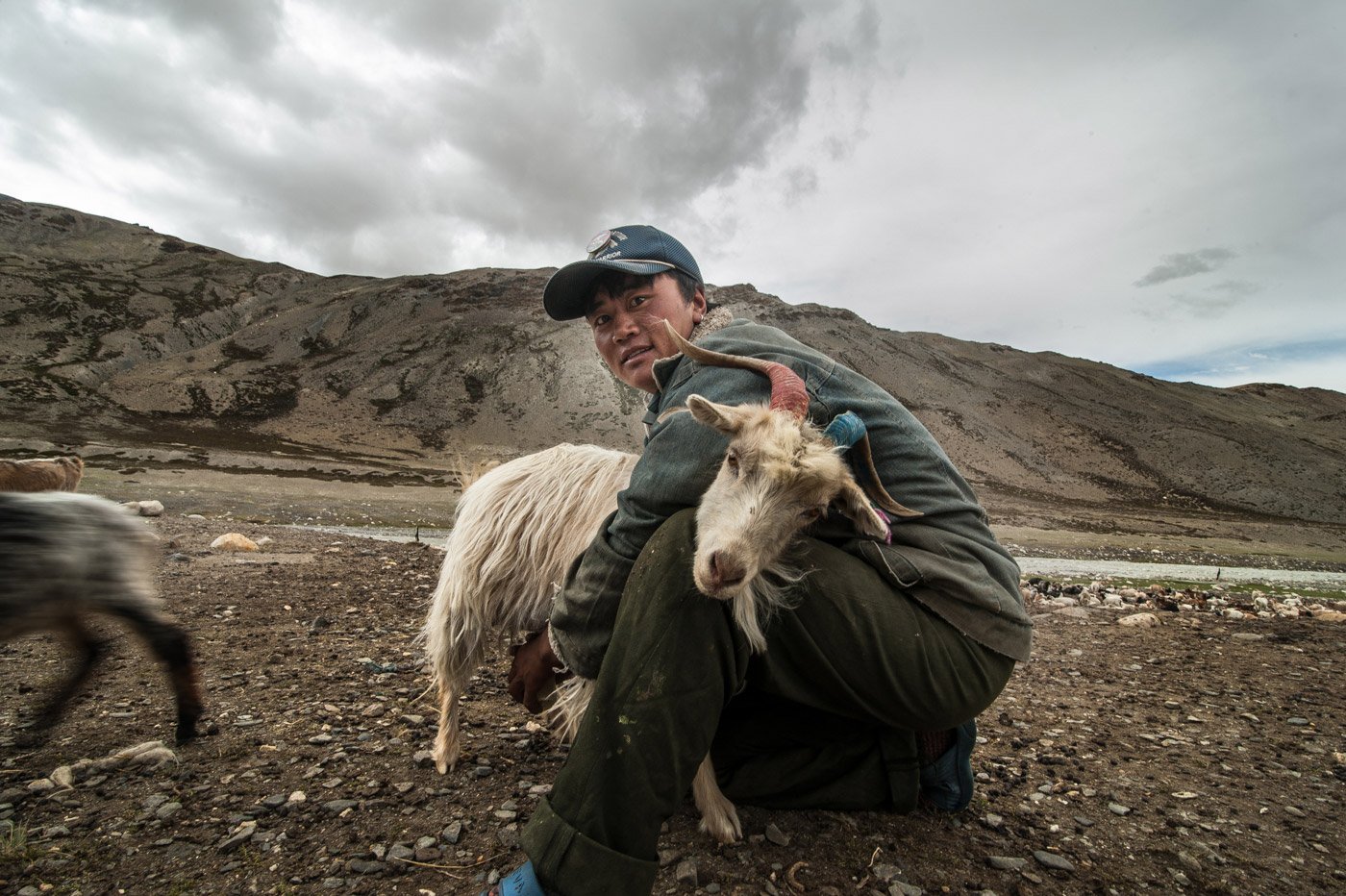
Thomkay, a Changpa herder, gets ready for the day. Each herder spends around 5-6 hours grazing every day. The Changpas share a strong bond with their animals and go to great lengths to protect them

Karma Rinchen is a goba or community elder. A goba must be wise, spiritual and experienced – he has all of these qualities
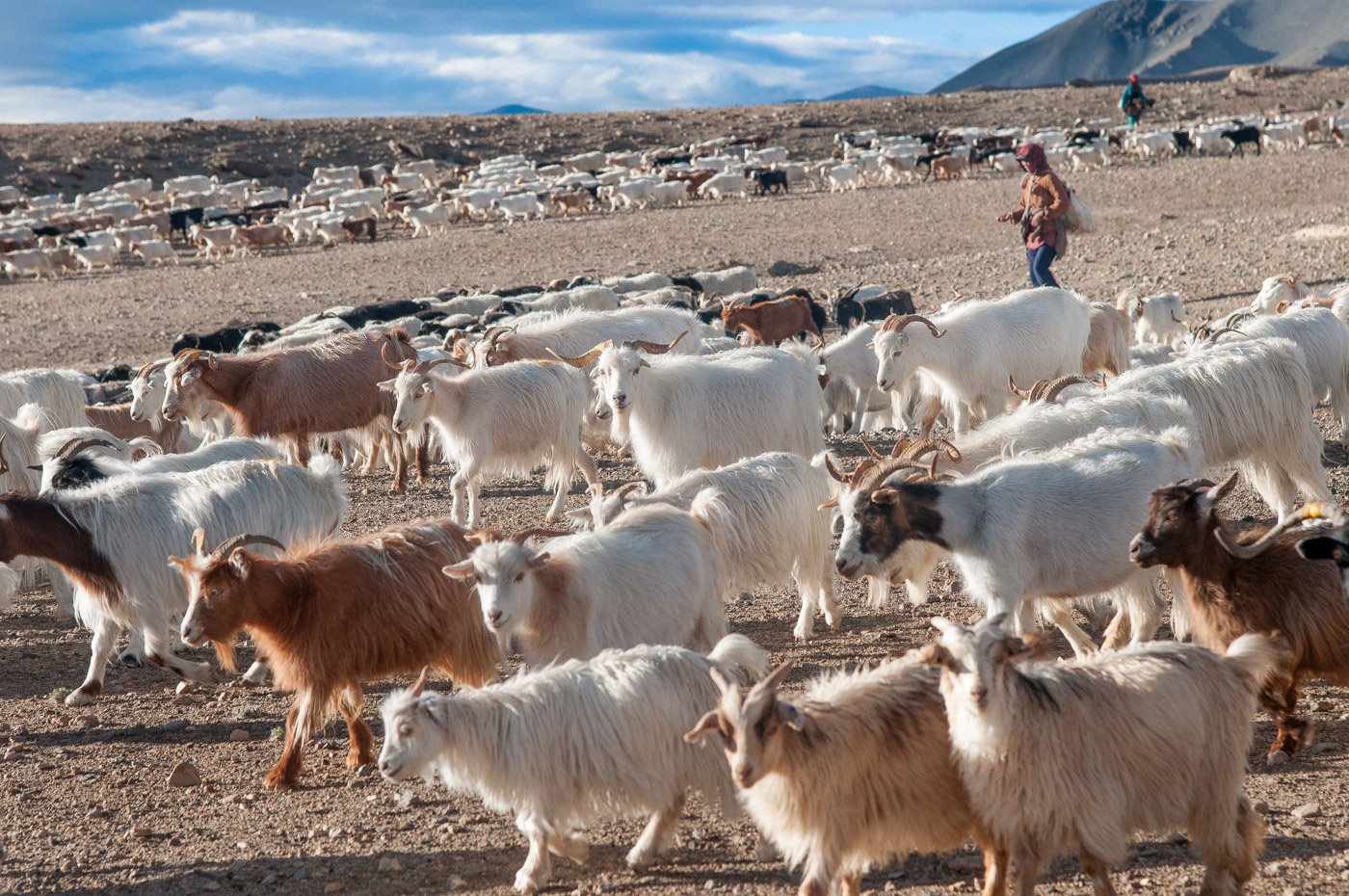
Pashmina goats out for the day at high altitudes: through most of the year, the animals graze in pastures located at a height of more than 4,500 metres
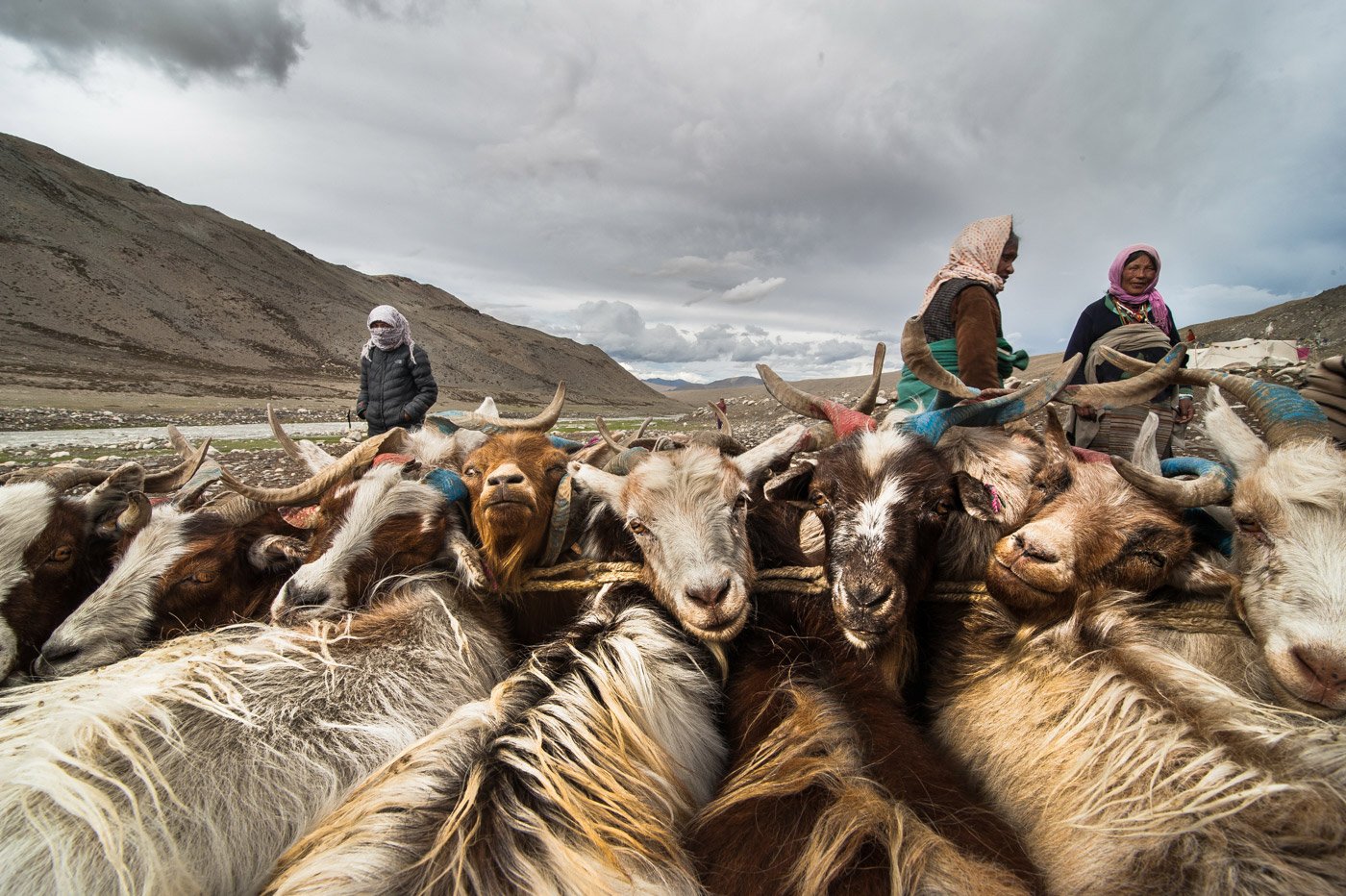
When the herds return after a full day of grazing, it is essential to count them and separate the female goats. Once this is done, the milking begins
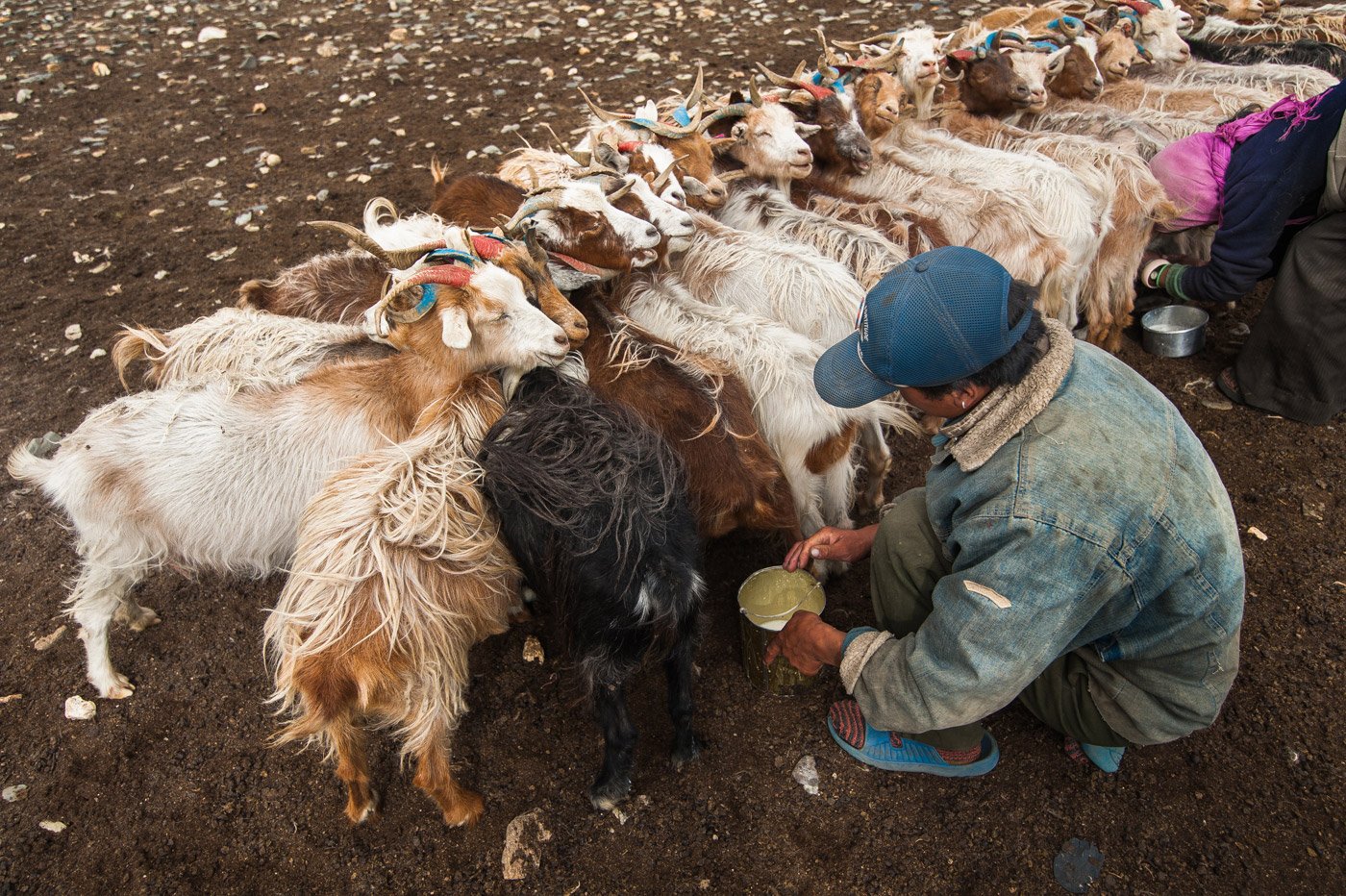
Some families, like Thokmay’s, milk goats as well as sheep. Milk and milk products like cheese are an important source of income or barter for Changpa families
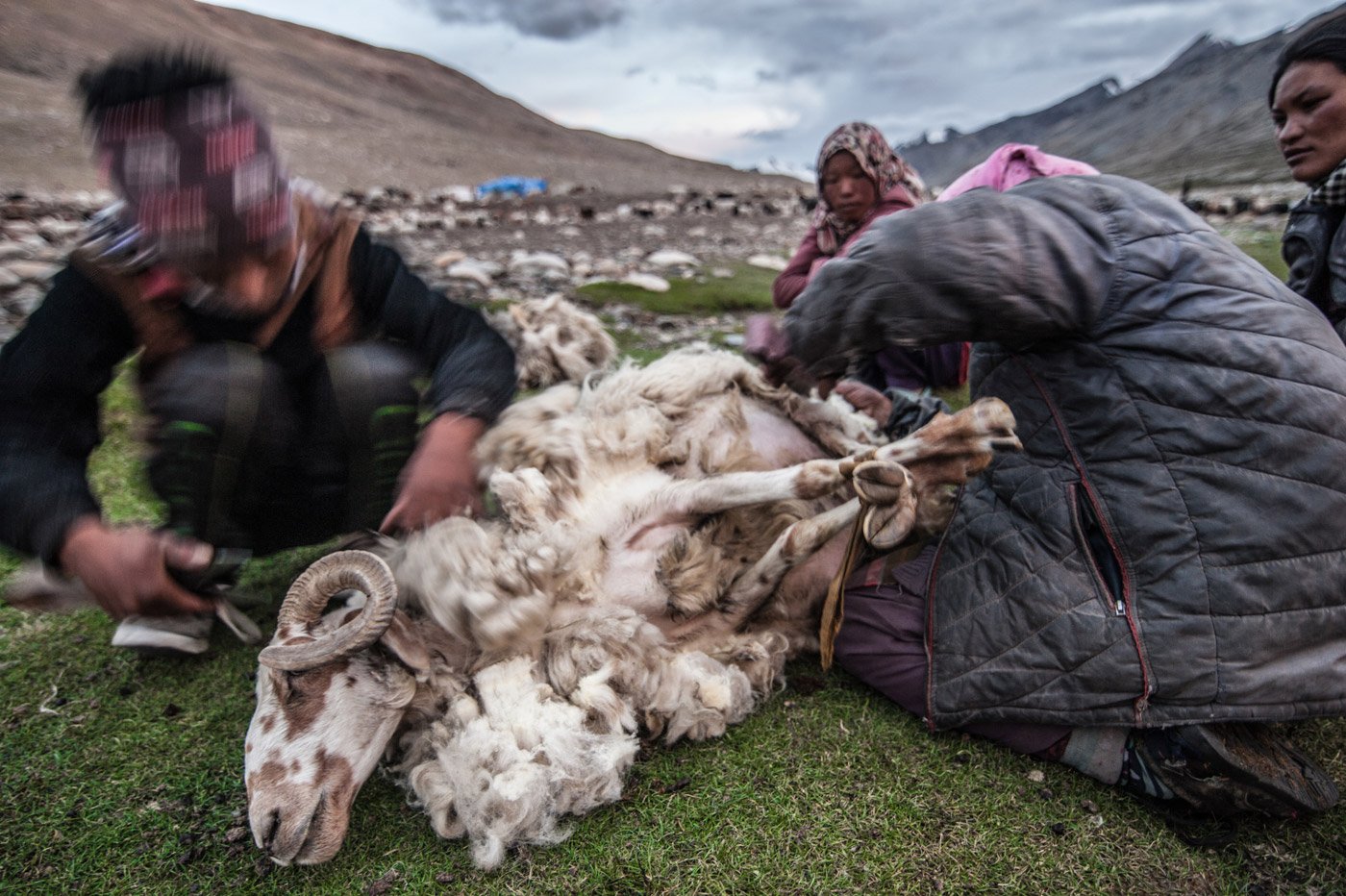
Changpas are among the main suppliers of cashmere wool, which comes from the pashmina or Changthangi goat’s soft undercoat. This undercoat reaches its maximum length in winter, and the Changpas shear in early spring
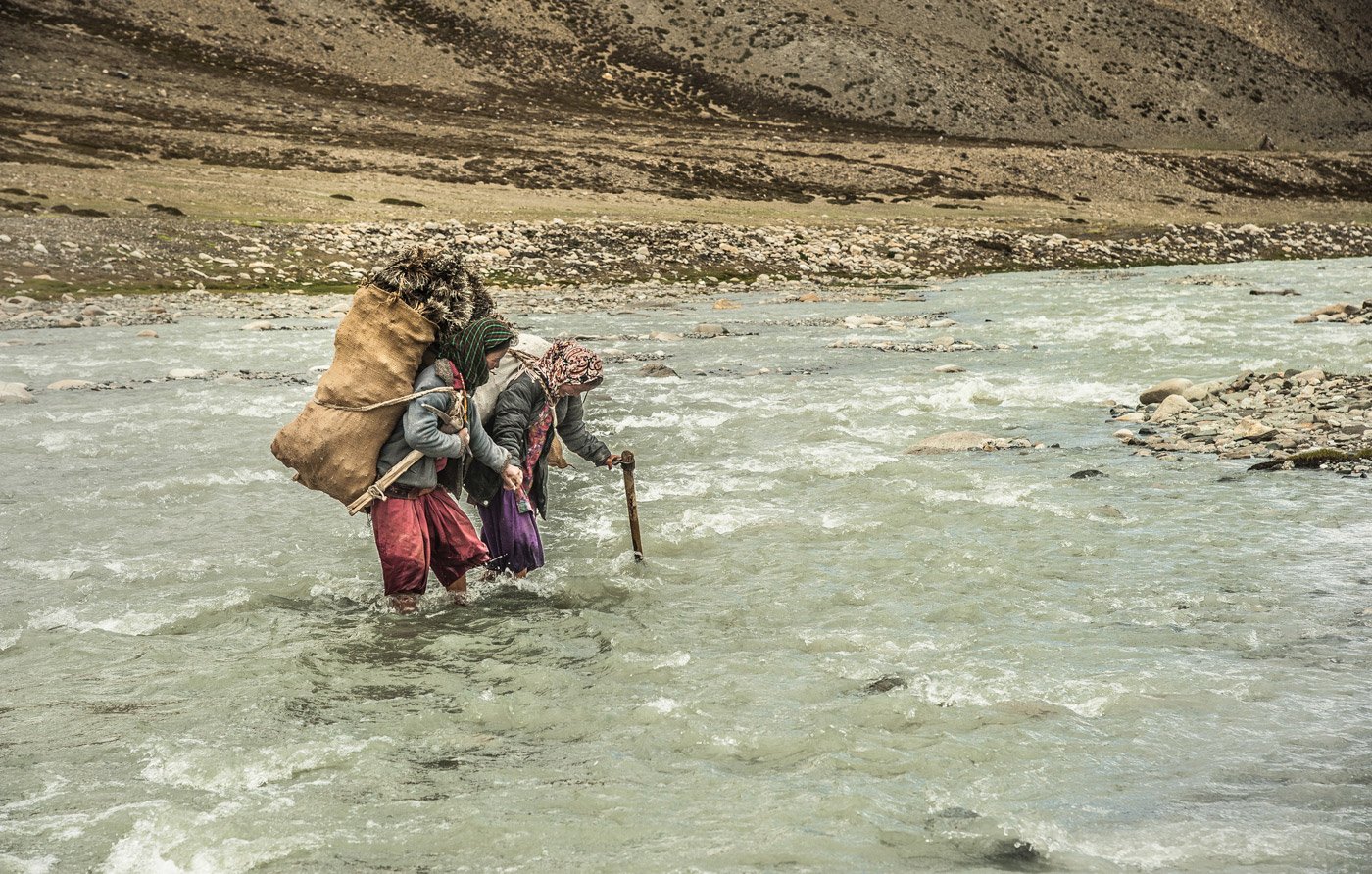
Two Changpa women returning to their rebo after collecting shrubs like artemisia for fuel
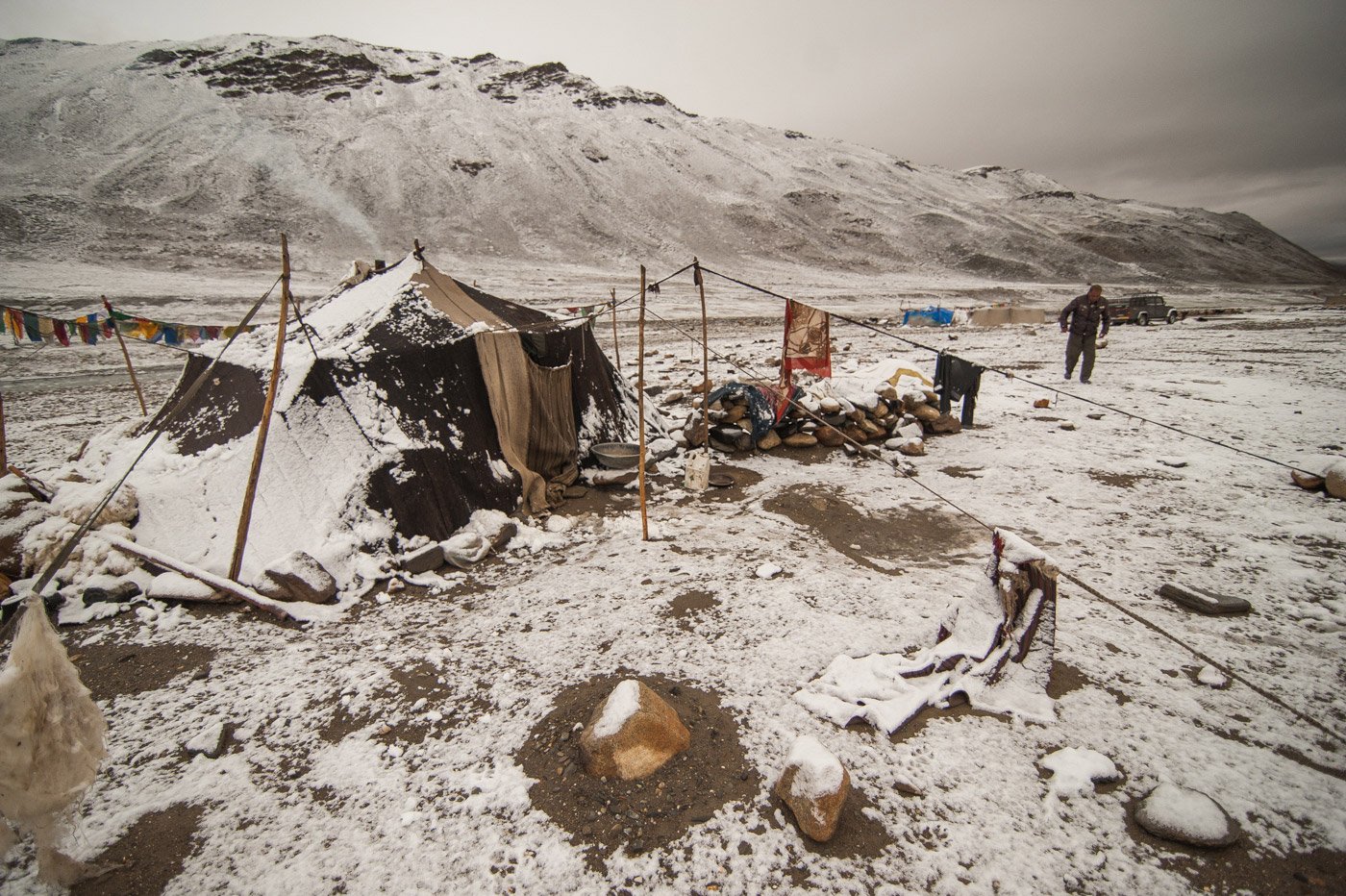
At 4,940 metres above sea level, the summers are not quite warm –in Hanle Valley, it can snow or rain at any time of the day or night
